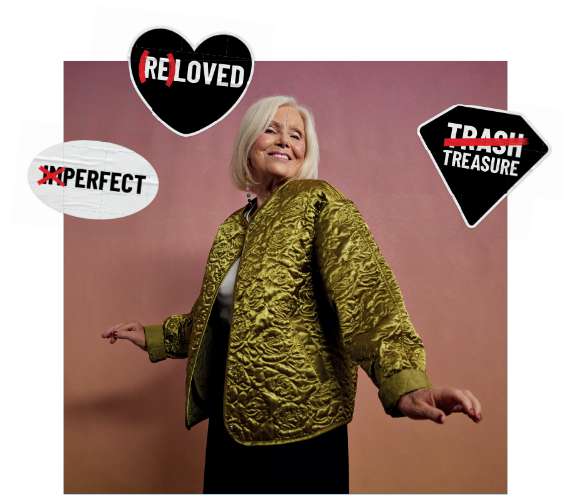SHELTER LAUNCHES A NEW INITIATIVE TO TEACH SHOPPERS HOW TO REPAIR CLOTHING
By: Erica Commisso
Shelter, a charity shop in the United Kingdom, has come up with an innovative solutions to solve one of its most common problems. The company noticed that clothing with minor flaws and issues was often left unpurchased in the stores for long stretches and eventually sent to landfill for a variety of reasons, and it decided to take action in the form of a new campaign called “Rescue and Repair.”
“Rescue and Repair was developed in response to some of these sticky challenges, making it easier to save imperfect pieces from landfill by offering shoppers something unique and new and providing good value at a time when people are feeling financially squeezed,” says Ian Trotter, the Assistant Director (Retail) at Shelter. “We’re giving people the chance to buy items in need of some TLC at lower than usual prices. Each one needs only a minor mend - the kind of thing that doesn’t need specialist kit and will only take a few minutes - and we’re providing information and practical help to guide people through that.”
Source: Shelter website
The information Shelter is providing comes in the form of quick, easy-to-follow YouTube videos, made in partnership with sewing specialists Della Yellow. The step-by-step video guides offer a solution for five simple clothing fixes: sewing on a button, mending rips, repairing holes, darning knitwear, and embroidering over marks on material.
“These poorer quality textiles typically have a lower life expectancy than something more expensive - so there is a tendency to either put them in the bin or leave them with us when they get damaged,” Trotter says. “Often people don’t think they’re worth repairing or don’t feel confident trying to fix or upcycle them.” The Rescue and Repair program, he says, offers a solution to that. And the lower pricing is an added benefit.
“Each item is priced individually and comes with a QR code taking the buyer to a short ‘How To’ video, guiding them through the kind of basic repairs needed,” Trotter says. “These are all relatively minor, ’quick fix’ repairs, so things like replacing a button, embroidering over a slight mark or fixing a torn hem/seam. Nothing too ambitious or difficult.”
In addition the QR codes, Shelter is also hosting expert-led workshops across its UK outposts to teach people how to upcycle clothing, and Trotter says the response has been overwhelmingly positive. It’s also encouraging the public to share their own sewing hacks and their creations on social media, hoping to further encourage more people to divert clothing from landfills and take fashion - literally - into their own hands.
Source: Shelter website
Of course, Shelter has also not lost its original mission, and proceeds from these sales will continue to fund initiatives to combat homelessness in the United Kingdom, a tenet of the brand that Trotter says is just as important and crucial as its sustainability aspect. “There are still plenty of pre-loved treasures being donated and amazing charity shop finds,” he says. “And by rescuing and repairing clothes from Shelter shops, shoppers can be sustainable while raising vital funds to help Shelter tackle the housing emergency and push for long-lasting change.”
Cover Image Credit: Kris Atomic / @krisatomic


